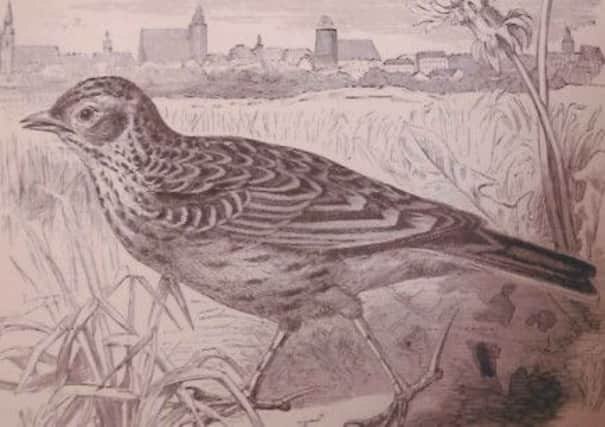RICHARD WILLAIAMSON: Farmers work hard to entice the skylark


I came across notices on the footpath, saying what was being done to bring the birds back again.
Linking Environment and Farming (LEAF) is a brave attempt to fill in some of the many missing parts of the countryside jigsaw. Farmers can produce brilliant crops of wheat, barley, oilseed rape, cattle and pigs to keep us humans alive.
Advertisement
Hide AdAdvertisement
Hide AdCan they grow crops of skylarks to keep our spirits alive? Thank goodness they are trying.
As reported in the walk, I found flowers of shepherds purse and groundsel on the path to Glatting Beacon.
These are some of the essential weeds whose seeds keep skylarks, woodlarks, goldfinches and linnets alive. In normal wildlife-crushing, pesticide farming, those would be obliterated like Holocaust victims, causing a serious decline.
Also, a century ago skylarks actually were a food crop in Sussex. Millions of the blithe spirits were caught in clap-nets on the Brighton Downs and packed off in wicker baskets via the Night Mail packets from Shoreham for poultry markets in Paris. Many went to London’s Covent Garden, too. Twelve thousand were netted in three hours one morning by the downland bird catchers.
Advertisement
Hide AdAdvertisement
Hide AdThe normal daily cargo up to the turn of the last century was 20 hampers, each packed with 14lb of larks. In with them were chaffinches, usually 100 linnets, ditto greenfinches, 40 redpolls, ten goldfinches, and the odd siskin, cirl bunting, brambling and corn bunting.
Then along came the first world war and the prairie sheepwalks and cornfields of France and Belgium where the larks bred in vast numbers were obliterated. They never really returned.
Agriculture has today changed the landscape of Eastern Europe as well so we no longer see the exaltations of larks from there either.
It is all a pretty dismal story, but farmers are today trying to reverse declines of skylarks, corn buntings, linnets, grey partridges and stonechats over the South Downs with one of the leading efforts on the Arundel Estate at Burpham as well as at Duncton. One of the bits missing out of the skylark jigsaw puzzle is the one variously-named insect.
Advertisement
Hide AdAdvertisement
Hide AdLEAF, with the help of Sussex ornithologist David Hart, has correctly identified where to find the missing piece which is in the grass. Field edges and even squares of grass in the cornfield will help to provide tiny flies and bugs on which skylark chicks are fed for the first 16 days of their lives.
That’s the sort of detail you need to know to bring the skylark back again.
To know why you want it back you should read Trevor Beer’s book Exaltation of Larks, published by SMH Books in 1995.
This is an anthology of all known prose and poetry of merit about the skylark, from Theocritus, Chaucer, Spenser and Shakespeare to Thomas Hardy and John Betjeman and 100 stations in between.
It ends with a cautionary tale to the very farmers themselves upon whose sympathies this blithe spirit so depends.